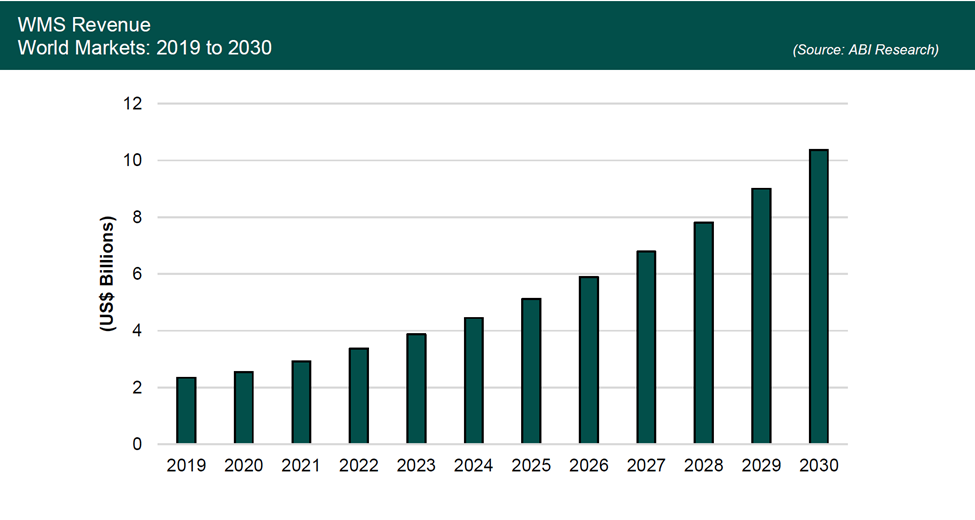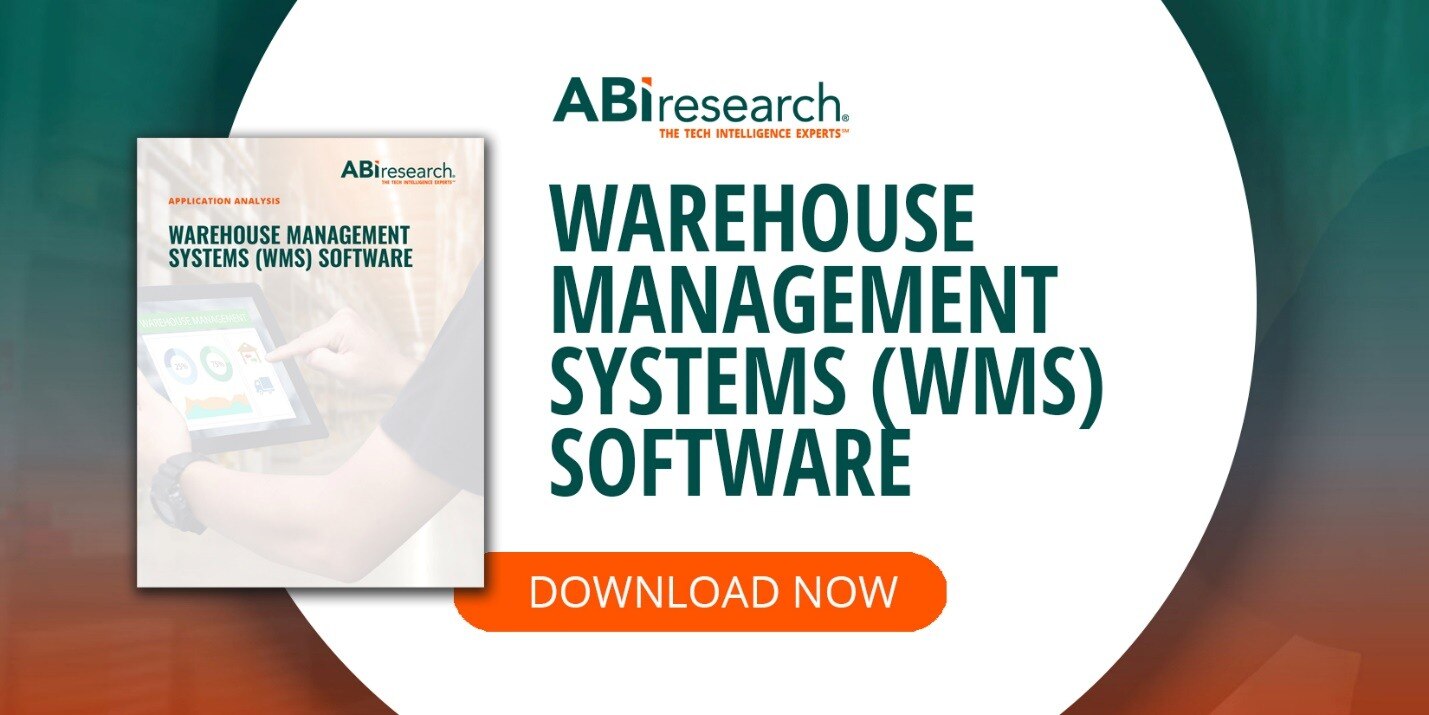The global supply chain disruption has made executives realize that their logistics operations can go into a state of disorder at any time. To make their supply chains more resilient and adaptable, company leaders are leveraging the automation benefits that come with Warehouse Management Systems (WMSs). Impressively, revenue in the WMS market will increase from US$3.4 billion in 2022 to US$10.7 billion in 2030, according to ABI Research’s Warehouse Management Systems (WMS) Software research analysis report—Logistics Service Providers (LSPs), retailers, and manufacturers are investing in this technology the most.
What Is a Warehouse Management System?
A warehouse management system is a type of software that provides a holistic view of a warehouse’s resources and allows workers to manage those resources in an optimal way. Everything from inventory management to order receiving can be automated with a WMS. There are three types of WMSs, as follows:
- Standalone System: Mainly deployed for managing warehouse operations and nothing more. Users can expect features like expiration date tracking, barcode scanning, cycle counting, slotting, putaway, receiving, picking, packing, and shipping.
- Supply Chain Modules: Takes a broader approach that supports end-to-end supply chain operations. For example, vendor relationships and risk assessment can be managed, in addition to warehouse tasks like inventory management.
- Integrated with ERP: Integrating a WMS with an Enterprise Resource Planning (ERP) platform is a great way to promote an in-sync system. The integration allows for warehouse management processes to work alongside other business processes, such as sales, customer service, finance, etc.

Warehouse Automation Trends that Warehouse Managers Must Pay Attention to
Here are some of the key trends that are re-shaping warehouses:
- Advanced analytics is a cornerstone of a warehouse management system as it leverages big data to uncover supply chain trends. Artificial Intelligence (AI) and Machine Learning (ML) can predict demand needs in a volatile market. Without analytics, it wouldn’t be possible to receive real-time insight that can be used to make strategic decisions in a timely manner.
- Blockchain makes the supply chain more secure and transparent and allows all supply chain partners to view an encryption-protected ledger where real-time inventory data are stored and where purchase orders are made. Blockchain also removes the need for a central command where parties need to confirm arrangements because everyone knows that the data they’re seeing are up to date. Blockchain also uses “smart contracts” that can automate purchase orders based on real-time inventory-level conditions, while also accounting for tariffs and other local regulations.
- Robotics is another key area that is re-shaping warehouse management. Technologies like Automated Guided Vehicles (AGVs), Autonomous Mobile Robots (AMRs), and Collaborative Robots (cobots) are changing the way inventory and other assets are managed in a warehouse. Integration with a WMS, among other software applications, is proving to be a critical influence on warehouse robotics implementation.
Warehouse Automation Best Practices
Dock-to-stock time, inventory accuracy, worker distance traveled, error rate, and order picking accuracy are obviously important Key Performance Indicators (KPIs) for warehouse operators to track when gauging the effectiveness of warehouse automation. However, it shouldn’t stop with quantitated metrics; qualitative data like worker satisfaction, safety, energy levels, and comfort are also important factors to consider.
If not doing so already, it's time to seriously consider automating inventory tracking and order forecasting. Not only will automation cut down labor costs, but it’s also more accurate than manual forecasting. Automation takes the guessing game out of the equation for warehouse decision makers.
Logistics personnel should choose a digitization strategy that works best for their own particular needs. A warehouse that’s focused on high shipment volumes will have different expectations than a warehouse more concerned with flexibility. Not all automation deployments are created equal, meaning warehouses that care mostly about high throughput will benefit the greatest from heavy automation in the shortest time span.
Warehouse Management System Case Study: DHL Supply Chain
DHL Supply Chain is one of the world leaders among independent Third-Party Logistics (3PL) providers. DHL’s customers are accustomed to benchmark turnaround times, thanks in part to its existing Blue Yonder WMS. But to take things up a notch, the company decided to deploy warehouse automation and robotics to more than 2,000 sites worldwide.
By teaming up with Blue Yonder, DHL was able to introduce a cloud-based “plug-and-play” solution that makes the process of onboarding a new device to a warehouse much easier. This new and improved warehouse management system enabled DHL customers to pick and choose robotic systems that were the best choice for their business. On top of that, DHL employees were then able to access a single, shared dashboard for robotics, allowing them to track warehouse progress instantly, check the status of important tasks, and send work-order updates to the WMS in real time.
Blue Yonder’s WMS also leveraged AI to help carry out logistical tasks done by associates and the robotics solution. The greater speed, responsiveness, and resilience provided by the WMS resulted in a 60% reduction in the time to implement robotics and an 80% savings in time to train employees with the new technologies.
The Time is Now to Get Onboard with a WMS and Warehouse Automation
A warehouse management system can be thought of as the missing piece to the supply chain puzzle. It’s more important than ever to gain full transparency on every aspect of logistics operations as real-time warehouse analytics can be converted into business-bettering action. As WMSs are an integral piece to automating many of the day-to-day warehouse activities, employees can spend more time on critical functions, and a warehouse can significantly expand its potential.
These findings come from ABI Research’s recent Warehouse Management Systems (WMS) Software research analysis report. This report is part of the company’s Supply Chain & Logistics research service.


